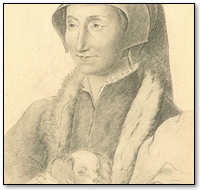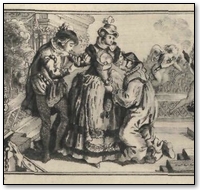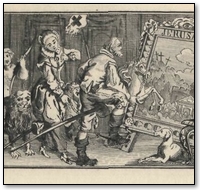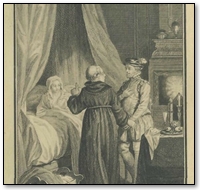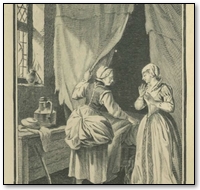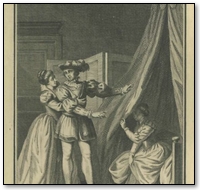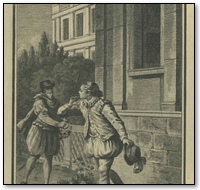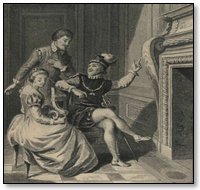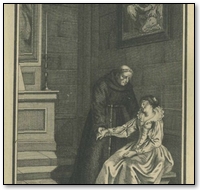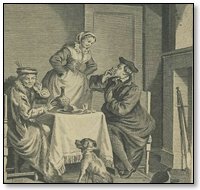The Heptameron
Plot Summary and Analysis of the Heptameron of Marguerite de Navarre
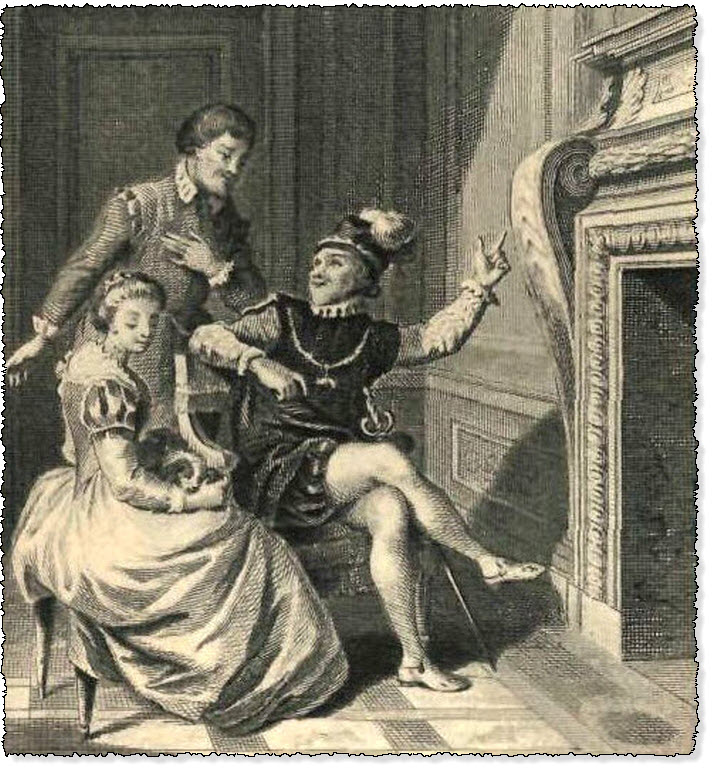
The Heptameron
The Heptameron is an important collection of short stories written in French by Queen Marguerite de Navarre. It is widely regarded as a major literary work, which has influenced the development of the short story genre. The Heptameron is also valued for its lively portrayal of 16th century Renaissance society, particularly social attitudes about marriage and the relationship between men and women.
The Heptameron consists of 72 short stories united by a several different framing devices. The overarching narrative framework is that of stories within stories, told by different narrators who are themselves characters in the story. The narrators, five men and five women, said to be modeled after the author and her court circle, are stranded at a mountain resort following a flash flood. While they wait for the roads to re-open, the narrators tell each other stories in order to pass the time. Within this framing device, there are secondary framing devices, as the stories are organized by days and by themes.
Each day the narrators pick a subject for the stories that they will tell, and so the stories are not random but rather expound various themes and often act as rebuttals and counterpoints to the stories told by the other narrators. One of the unique features of the Heptameron is that the narrators often disagree with each other and engage in lively debates and discussions on the significance of the stories; each interpreting the stories differently based on their personalities and experiences. This feature adds depth to the Heptameron by revealing the different meanings and interpretations of each story. The debates also reveal the different moral perspectives and social attitudes existing at the time on issues of marriage, infidelity and the status of women. Many critics have found in the Heptameron, a subtle trace of early feminist literature.
The stories told in The Heptameron are bawdy accounts of infidelity, deceit, lust and greed. On one level they are mere entertainment, on other levels they are biting critiques of the Church, of social hypocrisy and of the status of women. The stories are often morally ambiguous and the heroes and heroines of the stories are frequently morally reprehensible. The fact that the narrators and the stories they tell are said to be based on real people and events, sometimes identifiable, adds to the interest in the book.

The Heptameron's narrative structure and framing device was inspired by the Decameron, by Giovanni Boccaccio. In the Decameron, a group of people are isolated at a remote farm house by the Black Plague and they spend the time telling each other stories, 100 in total. In addition to following the narrative structure of the Decameron, The Heptameron was meant to also have the same number of stories: 100 stories told over 10 days. Unfortunately the author died before she could complete the eighth day of the stories. Only 72 stories were completed at the time of her death and the work was unnamed by her.
Later translators of her works named the collection The Heptameron in homage to the Decameron. The name of the Decameron is a compound of the Greek words for "ten" and "days". By analogy, Marguerite de Navarre's work was given the title of Heptameron, a compound of the Greek words for "seven" and "day", in reference to the fact that most of the stories take place during the first seven day period.
The Heptameron by Marguerite de Navarre should not be confused with The Heptameron, Or Magical Elements, supposedly written by the Renaissance physician and astrologer, Pietro d'Abano which deals with magical and occult rites. Aside from the similarity in their titles, the two books have nothing in common.The Story Tellers
Marguerite de Navarre based her characters on her family and courtiers, often making sly references to actual events and scandals involving them.
This is quick guide to the narrators of the Heptameron and a discussion of their actual identities.The Main Characters in the Heptameron:
- Oisille
- Parlamente
- Hircan
- Saffredent
- Ennasuite
- Nomerfide
- Geburon
- Longarine
- Dagoucin
- Simontault
Online Edition of the Heptameron
This is the Heptameron of Marguerite de Navarre
Other Sites: CruikshankArt.com · Dante's Inferno · Book-Lover.com · Canterbury Tales ·
This site is created by the Heptameron Information Society.

